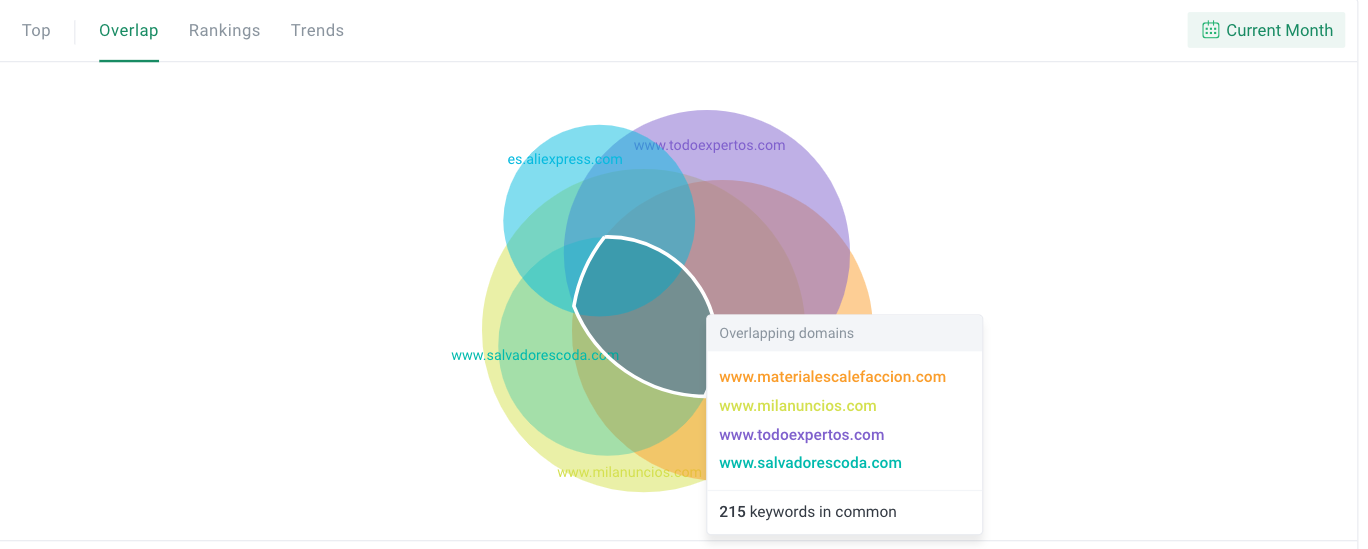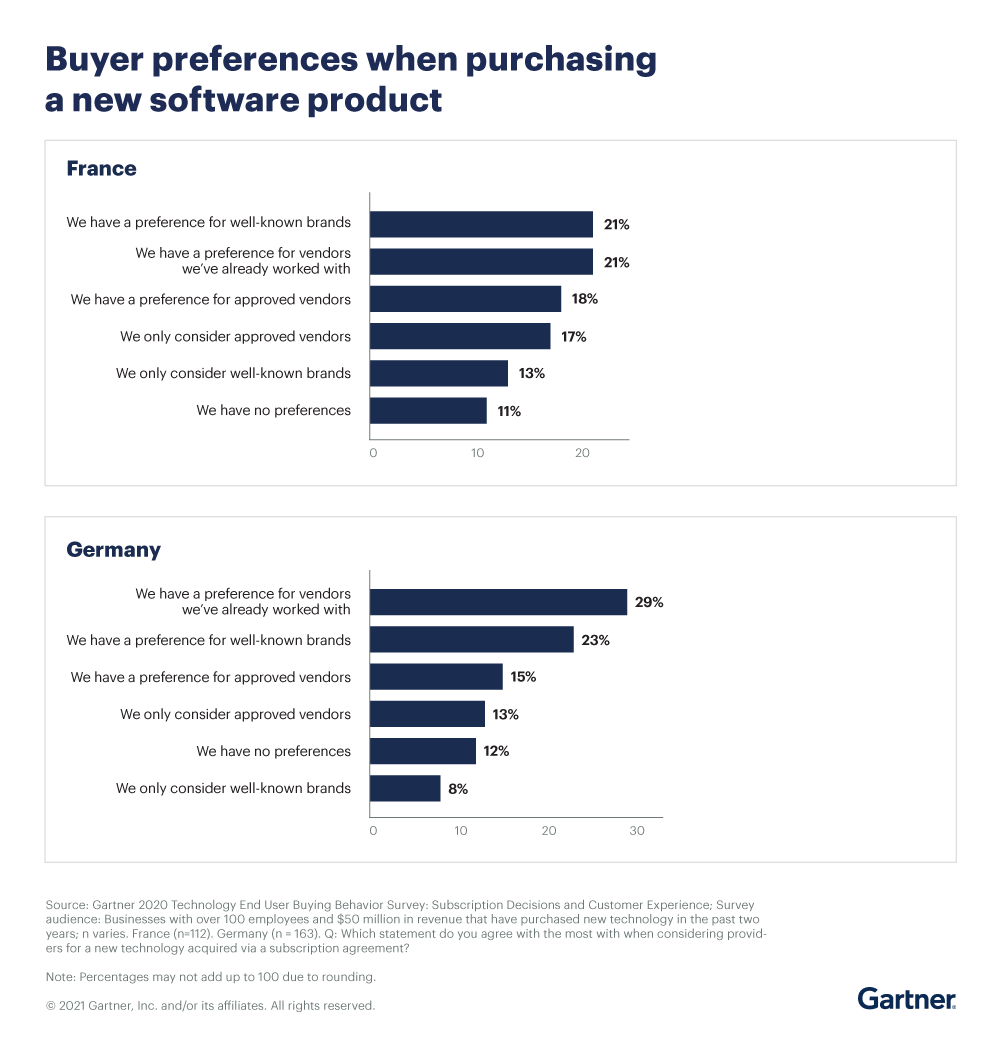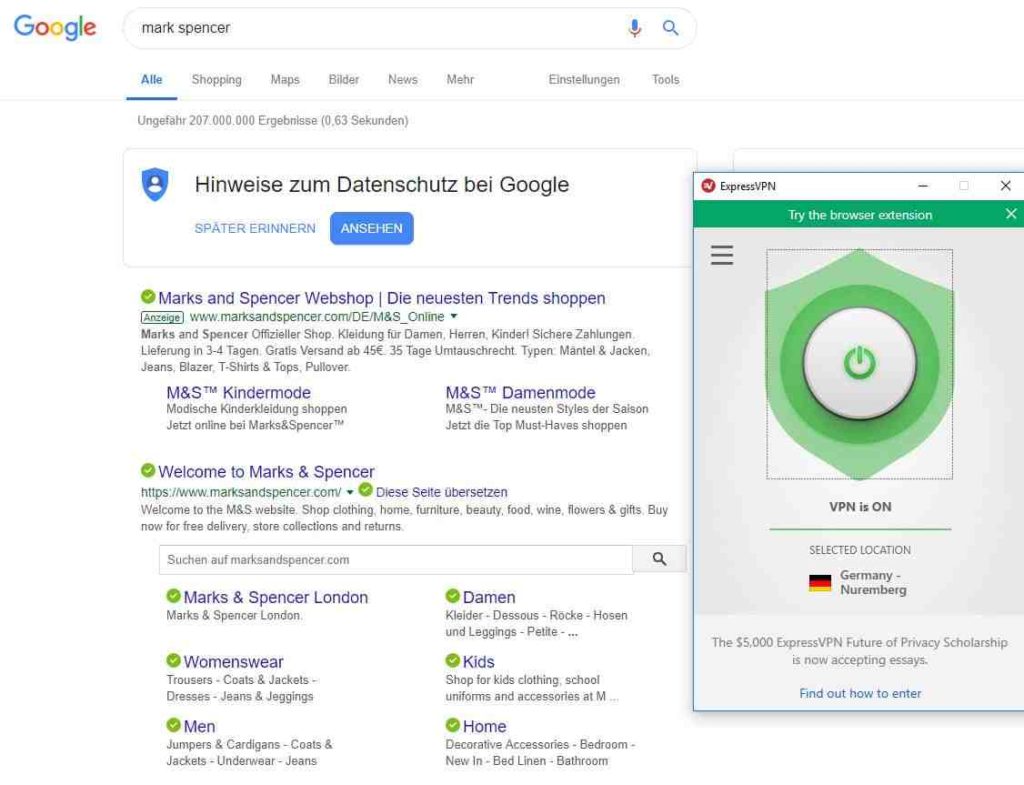So you’re ready to expand into the land of wheat beer, sausage and potatoes?
With a large and prosperous consumer base, Germany is an attractive market for many companies.
But there’s a little catch: you need localization.
Well, it has a lot to do with adapting your posts to local cultural norms.
And while that primarily includes language, it also includes traditions, humor, market expectations and more.
Whether you want to expand to Germany or another country, you need to understand the unique needs of your target audience and how to reach them before you can successfully sell your business to them.
So, before you start translating your English content strategy directly into German, you should know that adapting to German SEO is much more than just a translation job.
German consumers have different search habits, preferences and intentions than English speakers.
Simply translating your existing content strategy is only about 10% of a true German market expansion.
To be successful in German speaking markets with SEO, you need to create a brand new German SEO strategy.
In this article you will learn:
Why A German Market Expansion Is Worthwhile
Contents
- 1 Why A German Market Expansion Is Worthwhile
- 2 How To Craft A Winning German SEO Strategy In 6 Steps
- 3 Efficiently Expand Into The German Market With SEO Using A Proven Process
- 4 What are the 5 elements of a marketing plan?
- 5 What is marketing strategy 4Ps?
- 6 What are the 4Ps of communication?
- 7 What are the 4 types of sales promotion?

Although localization requires extra effort, Germany is a primary market that is definitely worth investing in. This is why:
Important Note: When expanding your business into the German market it is essential to work with native speakers to build your SEO strategy as that is your direct line for understanding local messaging requirements.
By developing your SEO strategy based on the needs of your target market, you can create quality content that resonates with your audience.
It can even give you a first-mover advantage, especially if your business is in a new and niche industry.
How To Craft A Winning German SEO Strategy In 6 Steps

Getting to know the Germans at Oktoberfest may seem intimidating and challenging at first.
But with a few key steps, you can create a German SEO strategy that can have a huge impact on pipeline growth in this burgeoning market.
1. Localize Your Business Strategy
Let me give you a concrete example of a real company that recently sought help with expansion in the DACH region.
As the US and UK are their primary markets, international markets come second in terms of investment, but still need to win many new contracts.
After looking through their website for about 30 seconds, I noticed a major problem:
While their website was translated into German (emphasis on the translated, not localized), their chatbot was only offered in English.
I tried typing German in the chatbot. No answer.
It kept trying to force me to book a call with a person in the US.
I then wrote, “Does this person speak German?” in German language, but again no answer.
Now imagine this scenario for the potential German customers of this company.
They came to the website from Germany, read the website in German and now, do you think they are comfortable booking a phone call with an English speaking seller in the US?
I can tell you with all my heart that it is a big “no”.
Therefore, just translating your existing content into German is not enough.
You also need German-speaking sellers and customer service representatives who can communicate with buyers in their language.
Localizing your entire business strategy is critical, otherwise your target audience will continue to choose your competitors who will deliver the buying experience they expect.
2. Prep Your Site Structure
Now that we’ve got the business stuff out of the way, let’s move on to SEO.
Before creating content, make sure your website is set up for multiple languages, which is usually done with the URL structure.
When you have the opportunity within your CMS (content management system) and technical infrastructure, always choose the subfolder approach.
This helps transfer DA (domain authority) from your main .com domain to your German website, meaning you can rank for German keywords faster.
Once your site structure is set up, using href lang tags on your pages is also critical.
This way you can assign a page to each market. By doing this, you are more likely to appear in search results for German users looking for content in their language.
3. Find Your German Competitors
When it comes to competitors, localization is again an important factor.
While you may already know which websites you are competing with in your own market, it is important to understand that they are unlikely to be your competitors for organic search traffic when you enter the German market.
Let’s say you’re a marketing automation software company looking to expand into Germany.
SEOquake is a handy plugin for comparing SERPs (search engine results page) in different languages and countries.
The number one keyword you want to rank for in UK markets might be ‘marketing automation tool’.
Here’s what SEOquake shows me as the English SERPs for the US:
Screenshot of search query for [marketing automation tool], Google, June 2022
Now look what I get when I search in Germany for [marketing automatisierung tool], the German equivalent for that English term:
Screenshot of search query for [marketing automation tool], Google, June 2022
This difference is exactly where your opportunities for German market expansion lie.
When you localize keywords and your content to compete with local SERPs, you position your SEO strategy to generate leads and sales with high buy intent localized keywords.
Rinse and repeat this strategy for your top keywords and you’ll start to see trends about who your best German search competitors are.
But be sure to follow up on these readers by offering them a buying experience that’s entirely in German.
4. Do German Keyword Research
Once you have a list of your German competitors, it’s time to do keyword research.
Keywords are at the heart of your expansion strategy, because that’s where you match content to the high purchase intent keywords I mentioned above.
Try the following steps to help with your keyword research:
Step 1: Set up your keyword research tool (shown here with Semrush) for the German market.
Screenshot of Semrush, June 2022
Step 2: Use Semrush’s keyword magic tool to enter a German keyword.
I always recommend starting with a vague main keyword as it will allow you to view the entire related keyword cluster in a list.
Screenshot of Semrush, June 2022
Step 3: Here, select long-tail keywords with search intent that have search volume and may fit into your strategy based on the content you want to create.
Step 4: The best way to determine where and how certain keywords fit into your content is to check their SERPs using SEOquake, as I showed in the previous section.
A word of warning: Semrush can be a bit limited for German SERP data, so if you’re planning to expand heavily into Germany using SEO, it might be worth getting an SEO tool with a more robust German database, such as Sistrix.
The most important thing to remember during the keyword localization process is that you shouldn’t just translate keywords from your brand’s first language into German.
While just translating content easily leads to content that is never even read, the process I described ensures that your content production resources focus on localized keywords that have the ability to rank and influence your leads and sales in Germany .
5. Localize Your Keyword Map
After the initial keyword research is done, it’s time to create your keyword map.
This means creating German keyword clusters based on search intent and making sure your German keyword map reflects the needs of your target audience across the sales funnel.
Here’s an example of how my team and I usually format this in Google Sheets:
Screenshot by author, June 2022
By doing so, you can also determine which content from the original English language website can be transcreated (translated and localized with specific keywords) and which new pages should be created in German.
Some pages in English don’t even need to be converted to German if your keyword research shows it’s not relevant to the German market – which is a major reason localization is much more laser-centric than pure translation.
6. Localize Your Content
The final step in developing your German SEO strategy is to localize your content.
For any piece of content you want to develop for your German audience, do the following:
Understand what Germans are searching for online, what kind of content they deal with and the messaging style they are used to. A quick example is that German is often much more formal than American and British English.
Repurpose your best performing existing content.
If you have existing English content that is doing well, consider transcreating it to German if the topic is also relevant to the German market.
Make sure to optimize it for local German keywords with search volume and matching search intent to give it the best possible chance of generating leads and sales.
Write new German-specific content.
Creating new and original content is especially important if you’re targeting Germany as a foreign market, as there will be elements in Germany that don’t exist in the US and UK markets.
Showing the German audience that you understand them by investing in content that is specifically relevant to them is an important trust builder that will bring them much closer to the purchase.
Track the performance of your SEO strategy in the German-speaking markets using a tool like Semrush (shown in the image below).
Use the data to find your top content opportunities in this market and continuously update and improve your content plan.
Screenshot of Semrush, June 2022
Efficiently Expand Into The German Market With SEO Using A Proven Process

Expanding your business into new markets can be a daunting task, but it is also an incredibly rewarding one.
When you push new boundaries, you open up a world of opportunities for your business.
So don’t be afraid to enter German speaking markets – with the right SEO strategy you can see amazing success.
Featured Image: Stanislaw Mikulski/Shutterstock
Price: the most important P in the marketing mix.
What are the 5 elements of a marketing plan?

5 important elements of a marketing plan
- Market size.
- Industry standards.
- Market dynamics/seasonality.
- Analysis of the competition.
- Analysis of products/services.
What is step 5 in the marketing plan flow? Step Five: Implementation and Control Decide how and when you will launch your plan. In this phase of the strategic marketing process you reach customers to inform and convince them of your product or service.
What are the 5 marketing strategies?
The 5 Ps of Marketing – Product, Price, Promotion, Place and People – provide a framework that helps guide marketing strategies and keep marketers focused on the right things.
What are the 7 strategies of marketing?
These seven are: product, price, promotion, place, packaging, positioning and people. As products, markets, customers and needs change rapidly, you should constantly review these seven Ps to ensure you are on track and getting the maximum possible results in today’s market.
What are the five strategies of marketing?
The 5 areas you need to make decisions about are: PRODUCT, PRICE, PROMOTION, PLACE AND PEOPLE. While the 5 Ps are somewhat manageable, they are always subject to your internal and external marketing environment. Read on to learn about each of the P’s.
What is marketing strategy 4Ps?

The 4 P’s of marketing include product, price, place and promotion. These are the key elements that must be brought together to effectively promote and promote a brand’s unique value and help it differentiate itself from the competition.
What Are The 4 P’s Of Marketing And What Does Each Mean? Also called the Marketing Mix, the 4 P’s of marketing (place, price, product and promotion) are the four pillars of a successful marketing strategy. Together they bring your product to the most likely buyers at the right price.
What are the 4Ps of communication?
A good communication flow in the office comes down to what I call the ‘four Ps’: portions, packaging, placement and time. In other words, you have to get the message across at the right time, in the right place and in nicely packaged, digestible bites.
What is communication explain the methods of communication 4 points? Communication is the sharing or transfer of information between two or more individuals or a group of people. Technically, any communication process requires a sender, a receiver, a message, and a medium. The conveyance of a message often involves emotions and cultural meaning.
What are 7cs of communication?
The seven C’s of communication are a list of principles for written and spoken communication to ensure they are effective. The seven C’s are: clarity, correctness, brevity, politeness, concreteness, consideration and completeness.
What is 7cs of communication with examples PDF?
The seven C’s are: clarity, correctness, brevity, politeness, concreteness, consideration and completeness.
What is an example of consideration in communication?
Consideration – Consideration involves â€putting in the shoes of others†. Effective communication should take into account the audience, i.e. the audience’s points of view, background, mindset, education level, etc. Try to get a picture of your audience, their needs, emotions and problems.
What are the t’s of communication?
They identified the three T’s of communication: tuning in, talking more, and taking turns.
What are the do and don’ts of communication?
Communicate from a strong position. Make sure your statements are clear and free of unnecessary jargon. Take responsibility for making sure what you say is understood by the listener or audience. Don’t assume that an audience shares your interest in the topic.
What are the four T’s of communication?
Conversations go well – or not – depending on four T’s: tone, timing, subject, total. With co-workers, bosses, family, friends, and especially significant others, these can make or break things.
What is at the core of effective communication?
Listening is one of the essential elements of effective communication. People who are active or engaged listeners understand things in more detail. It means that active listeners understand what the user is trying to say, even if the speaker is not very effective.
What is effective effective communication?
Effective communication is the process of exchanging ideas, thoughts, opinions, knowledge and data so that the message is received and understood clearly and purposefully. When we communicate effectively, both the sender and the receiver feel satisfied.
What are the 3 effective communication?
When communication takes place, it usually occurs in one of three ways: verbal, non-verbal, and visual. People often take communication for granted.
What is the core of communication?
In Core Communication you will learn six conversational and five listening skills to resolve conflicts, make decisions, solve problems and negotiate more effectively. These practical communication skills strengthen your relationships and increase your personal and professional opportunities.
What are the 4 types of sales promotion?
Types of Sales Promotion – 4 main types: consumer sales promotion, dealer promotion, business promotion and public relations.
What are the four methods of sales promotion? Methods used in sales promotion include coupons, samples, premiums, point-of-purchase (POP) displays, contests, discounts, and sweepstakes.
How many types of sales promotion are there?
There are two types of sales promotions: consumer and trade. A consumer sales promotion targets the consumer or end user who purchases the product while a trade promotion targets organizational customers who can encourage direct sales.
What are the 4 types of sales promotion?
Types of Sales Promotion – 4 main types: Consumer Sales Promotion, Dealer Promotion, Corporate Promotion and Public Relations.
What are the 3 types of promotion?
There are three main promotion categories: Acquisition. Generate income. Activation.
What are the 4 major types of promotion?
The four main means of promotion are advertising, sales promotion, public relations and direct marketing.
What are the 4 aims of promotion?
The purpose of promotion is to increase brand awareness, generate interest, generate sales or create brand loyalty. It is one of the basic elements of the market mix, which includes the four Ps, namely product, price, place and promotion.
What are the different types of promotion?
(a) Advertisement. (b) Personal Selling. (c) Publicity. (d) Sales Promotion.
What are the two major forms of promotion?
Personal selling and advertising are the two best-known forms of promotion. In terms of costs and market impact, this is the most important form.



